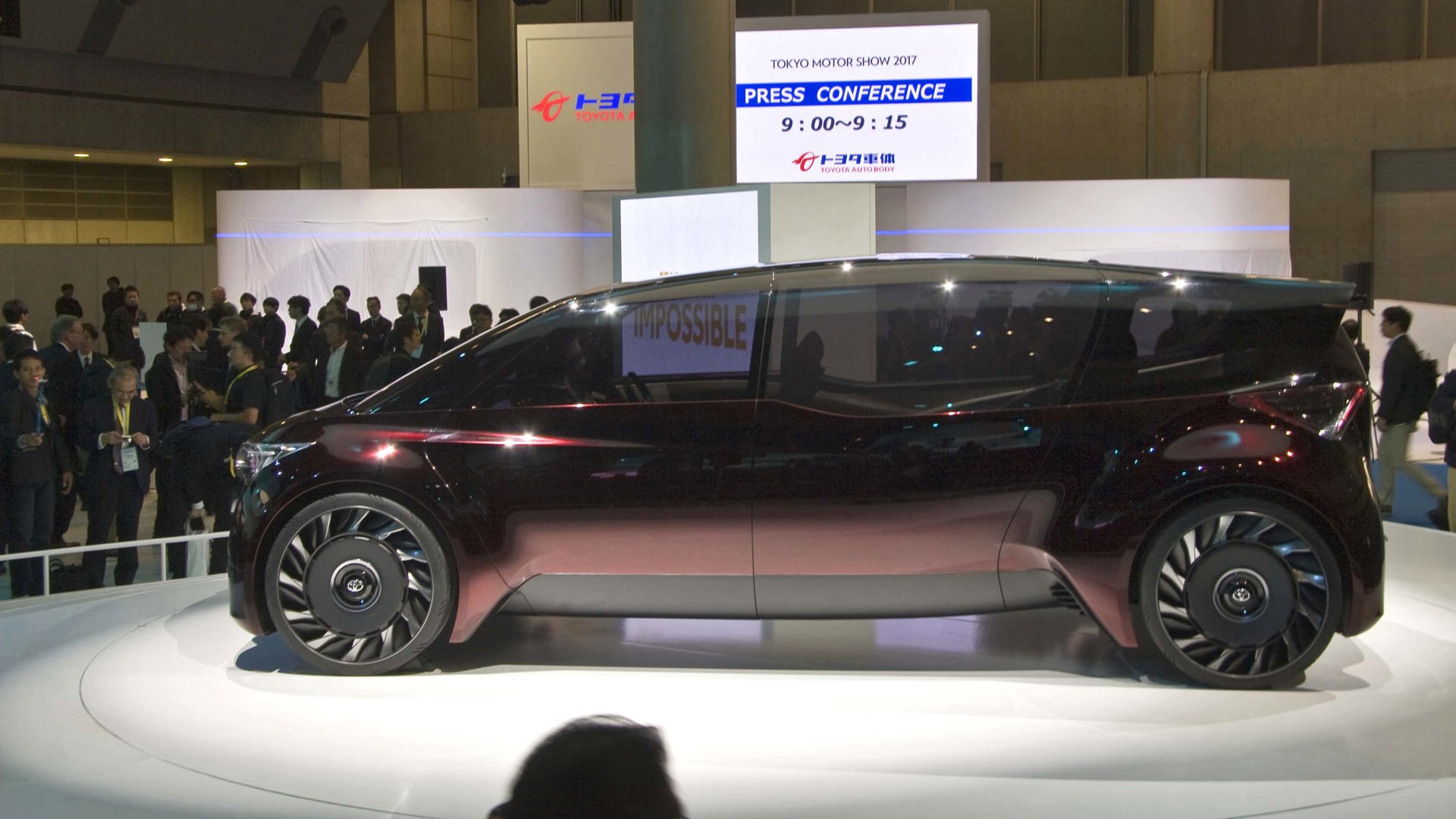TOKYO, Japan – While Toyota’s claim that it’s “the vehicle you can love, that loves you back” might be overdoing it, the new FCV (fuel-cell vehicle) concept revealed at the Tokyo Motor Show is a rather interesting design wrapped around a hydrogen fuel-cell energy source. The self-explanatory Fine-Comfort Ride moniker could also coyly refer to it being a fuel-cell vehicle. Described as a “new form of premium saloon”, the FC-Ride can reportedly travel up to 1,000 km on a single “tank”. Refilling at a hydrogen station takes less than five minutes – that’s if you can find one.
The wheels, each powered by an electric motor, are pushed out to the corners, which frees up a lot of interior space. The resulting boxy outline creates a wedge-shaped footprint with the cabin occupying the widest part. Its unique shape is not only aerodynamically efficient, it creates 1,950 mm of width to maximize seating space. Full body cladding underneath also helps with aerodynamics, while providing further isolation from road noise.

In addition to its more-efficient hydrogen powertrain, the FC-Ride is also a showcase for Toyota’s advanced autonomous driver-assist technology. Unveiled with a slew of other fully autonomous vehicles which included a passenger bus, taxi, and single-occupant runabout, the FC-Ride would probably feature a “chauffeur mode” allowing the driver to relax, or socialize with passengers.
The six-passenger interior layout features front seats that can swivel 180 degrees to face the reclining second row, lounge-style, with a bench seat in the rear. The design is minimalist, with an absence of knobs and switchgear. Instead, there are several touchscreens and what could be projection display on the side windows.

The next-gen fuel cell is smaller, lighter, cheaper, and more efficient than the one currently in the Mirai, and reportedly delivers more than 400 hp through all four wheels. While it’s not likely that the FC-Ride will see production, it’s an indication of what may come down the pipeline in the near future.
Toyota’s next generation of Artificial Intelligence vehicles connected to a Mobility service platform are projected to hit highways by 2020 and inner roads by the mid-2020s.

Also on Toyota’s Tokyo stand were the GR HV Concept – a hybrid-powered rear-wheel-drive sports car that looks like a cross between a GT86 and a Lancia Stratos. It offers hope in an autonomously driven future that there will still be a place for the enthusiast. Along with its THS-R (Toyota Hybrid System Racing) powertrain derived from their hybrid Le Mans racer, the GR HV Concept features a new take on the automatic transmission. No slushbox this, with the press of a button it locks in manual mode – and the shifter can be used to row through its six gears in a traditional H-pattern.

Resembling the recently departed FJ Cruiser, the new TJ Cruiser – which stands for “toolbox joy” – takes the best features of a hippie surfer van and a slab-sided rock crawler and neatly combines them in a hybrid concept that looks all but production-ready. The TJ Cruiser’s got room for boards and bikes and its origami interior can be arranged in a variety of configurations.

It looks just like the 20-year-old car it could replace, but the Century Limo combines retro looks with cutting-edge AI technology – including a Chauffeur Mode that can drop you off at the airport, take itself to the refuelling station before going home, then pick you up on your return.














